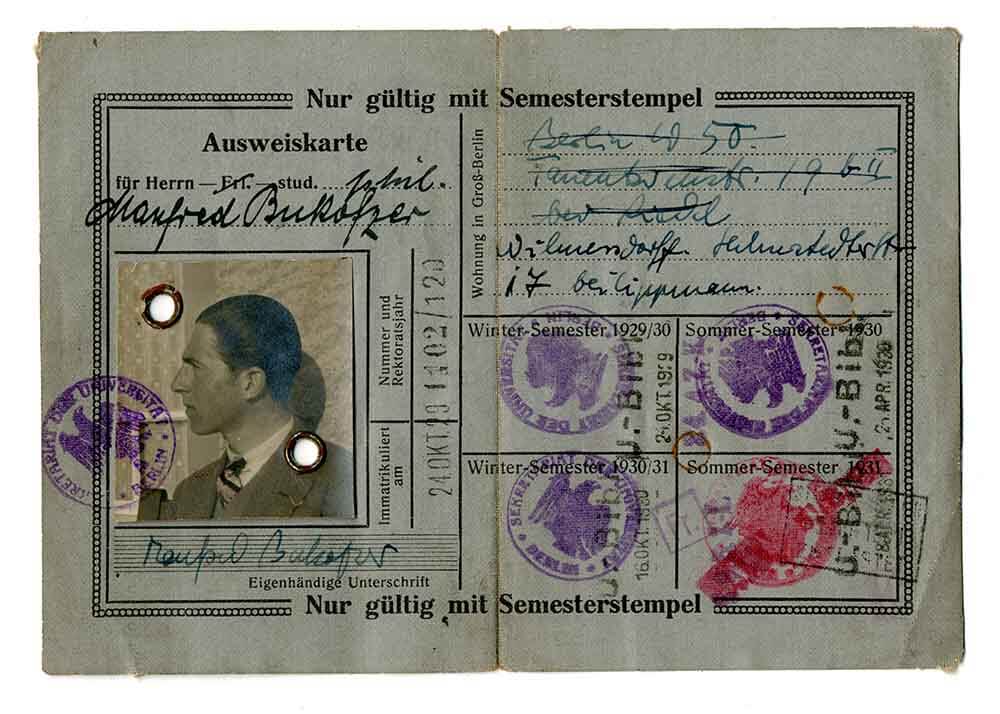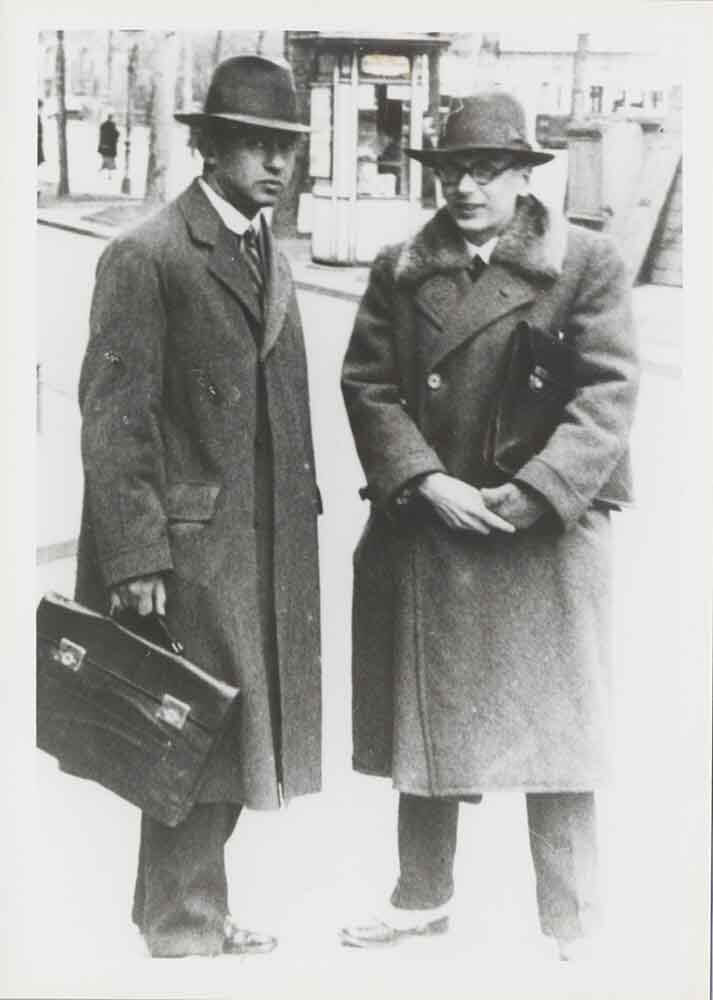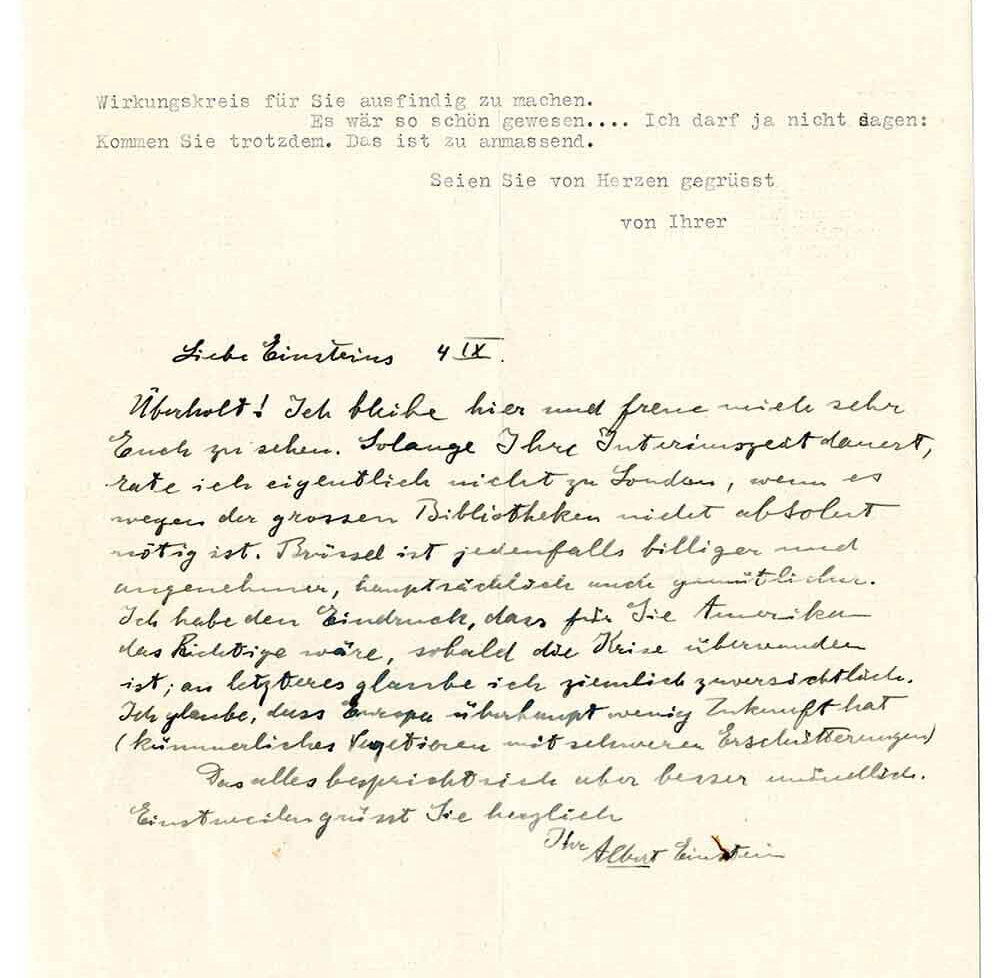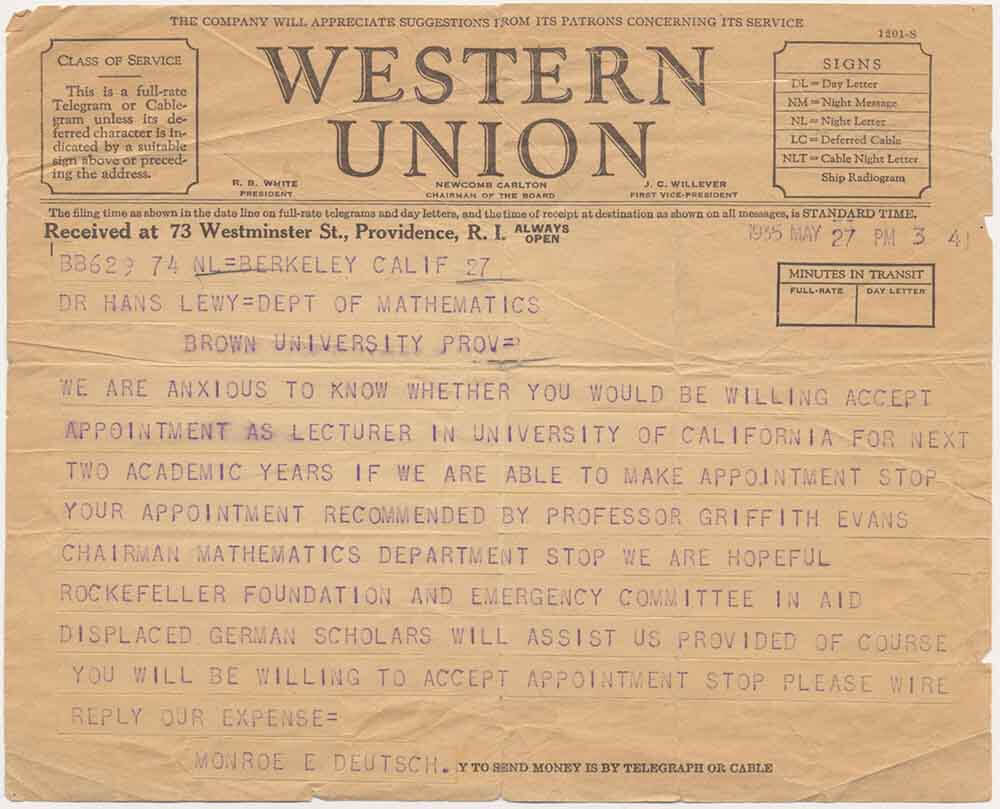Saved by The Bay
The intellectual migration from fascist Europe to UC Berkeley
The spreading of fascist and anti-semitic ideologies across Europe in the early 20th century and the rise of Hitler to power in 1933 had wide-ranging consequences on the lives of millions of people. In addition, these events made intellectual and academic life initially difficult, and eventually impossible, for many, professors and students alike. The German “Law for the Restoration of the Professional Civil Service” (April 7, 1933) allowed tenured civil servants who were “politically unreliable” or of “non-Aryan descent” to be dismissed from office. Similar measures were applied in Austria after the Anschluss (the country’s annexation to the Third Reich on March 12, 1938), in Italy through laws passed in the fall of 1938, as well as in other European countries. Many intellectuals were targeted by systematic acts of violence. Others had the foresight to seek opportunities abroad before the Second World War, which broke out in September of 1939, made travel virtually impossible for all. Their migration enriched the intellectual landscapes of countries such as the United States, which became safe havens for many refugees.
In the spring of 2013, faculty, curators and students interviewed current and Emeriti faculty, conducted research in the archival collections of the UC Berkeley Libraries, and led a public workshop at The Magnes. This work unearthed hundreds of primary sources documenting the lives of scholars who came to Berkeley as refugees from fascist Europe. These individuals contributed much to the academic life of our University, often becoming world-renowned leaders in all fields of scholarship and research. They also expanded the global mind of the campus, paving the way for UC Berkeley’s leading role in academia and in public intellectual engagement, two decades before the rise of the Free Speech Movement.
The exhibition, Saved by the Bay: The Intellectual Migration from Fascist Europe to UC Berkeley, highlights the history of this important intellectual migration through biographical sketches, a film, and circa one hundred documents from the University Archives, The Bancroft Library, and the Jean Gray Hargrove Music Library at UC Berkeley. The materials, which include letters, photographs, travel documents, and professional records, document personal and professional lives in fascist Europe, the strategies of immigration and refugee life, the arrival in California, and the experiences on campus of a select number of exile faculty at UC Berkeley. We hope that this initial work will encourage further scholarship, and foster a deeper knowledge of the history and life of our University.
Europe
Intellectual refugees carried with them the recollections of a lost world, made of childhood memories, family ties, university studies, and professional lives. Many of these scholars were students and faculty at leading European universities, did research in some of the world’s top libraries, worked as editors at influential academic publishing houses, contributed to national press outlets, and were often engaged public intellectuals. Born between the late 19th and the beginning of the 20th centuries, they experienced the peak of Europe’s intellectual creativity. But they were also exposed to highly traumatic events, which from the end of the First World War led to the rise of fascism across the continent.
Photographs, birth certificates, school transcripts, and early academic publications kept in the personal archives of these scholars testify to this ever present past. Academics who were not openly aligned with the rising fascist parties experienced intellectual isolation. Jewish intellectuals often encountered anti-semitism at school and in the workplace. Some of them were amongst the earliest targets of Nazi and fascist persecutions. Denied their rights as students or faculty, expelled from academic institutions and publishing circles, at times incarcerated in the early waves of arrests and internment in concentration camps, intellectual exiles also brought to Berkeley an indelible first-hand knowledge of the inner workings of totalitarianism.
Migration Strategies
Some intellectual refugees were still students when Hitler seized power in Germany in 1933, and others had just received their advanced degrees and were at the beginning of their academic careers. A few more, like mathematicians Hans Lewy and Alfred Tarski, and musicologist Alfred Einstein, were already established figures in their academic fields and well known in international circles.
Regardless of individual backgrounds, migration strategies followed similar patterns. These included fully documenting one’s life and professional career (a task that became nearly impossible after the beginning of the Second World War); leveraging international contacts and procuring endless scores of documents, including identity papers, letters of endorsement, and affidavits of support; and helping family members and colleagues in need.
All migration paths were met with the ultimate challenge: traveling out of Germany, Austria, Italy, and the other European countries that progressively fell under fascist rule and Nazi occupation, and securing passage to America. Travel happened exclusively by boat, sometimes directly from Europe, and at times via Asia. With the exception of those who had already obtained academic positions prior to their departure, intellectual exiles had next to worry about becoming fluent in English, and finding long-term positions at academic institutions, while at the same time demonstrating to the US Government that their knowledge was a value to society and, after 1941, to the war effort. Many found jobs on the East Coast or in the Midwest. On the West Coast, UC Berkeley was one of the few institutions ready to open its doors to them as well.
Berkeley Life
Once in Berkeley, recently emigrated faculty joined campus life. They secured prominent appointments, acquired positions of leadership, and more often than not became leading figures in their respective disciplines. Their European education was an added bonus to the university, and their international connections and reputations highly contributed to that of the institution. The materials in the University Archives and in departmental libraries help paint a multifaceted picture of what developed over the decades following their arrival in Berkeley. New departments and institutes were founded, international publications were issued, and world-class awards conferred.
A first-hand knowledge of authoritarian regimes often proved to be a catalyst of political engagement on and Berkeley life off campus. Hans Lewy’s vehement responses to the Loyalty Oath—the state-mandated oath of allegiance to the United States and the State of California required from faculty, to which in 1949 the Regents of the University of California had added an anti-communist clause—are the epitome of the impossibility, as a victim of fascism, to remain silent when faced with any form of institutional abuses of power. Some, like Ernst Kantorowicz, refused to sign the Oath, and left Berkeley. Professional prominence combined with active openmindedness proved to be essential elements in establishing a tradition of innovation on the UC Berkeley Campus, and the leadership of these immigrant scholars has created a legacy that is felt to this day in the work of their students and successors.
Looking Back
Immediately after the War, and increasingly more so over the following decades, UC Berkeley’s refugee faculty set their gaze upon Europe. Some looked for lost relatives, friends and colleagues who had remained behind or were murdered in the Holocaust. Others intervened on behalf of stateless refugees in Europe and elsewhere, and later of intellectuals persecuted by the Soviet regime. Some visited their countries of origin often, and spent considerable time in Europe. Others never or rarely set foot in Europe and regarded the San Francisco Bay Area as their new and only home. Some received belated recognition and even reparations from the same European countries and academic institutions that had once persecuted and expelled them. Of particular note, is musicologist Alfred Einstein’s rejection of the prestigious “Mozart Medal,” which had been conferred to him by the Mozarteum (Salzburg) in 1949.
Following a pattern that became increasingly more visible since the 1980s, many received honorary degrees, commendations, prizes, and other forms of public recognition from government branches, cities, and the very universities that half a century earlier had marked them as undesirables.
Videos
Scholars
Manfred Bukofzer
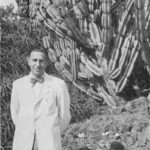 Oldenburg, Germany, 1910–Berkeley, Calif., 1955
Oldenburg, Germany, 1910–Berkeley, Calif., 1955
Musicology
Manfred Bukofzer studied at the Ruprecht-Karls-Universität in Heidelberg, and at the Friedrich-Wilhelms-Universität and the Stern Conservatory in Berlin. He left Germany in 1933 and received his doctorate from the University of Basle. In 1939, he immigrated to the United States and taught musicology at the University of California, Berkeley from 1941 until his death. A music historian and the editor of several collections of early music compositions, Bukofzer was the author of Music in the Baroque Era (1947), Studies in Medieval and Renaissance Music, and Music of the Classical Period, 1750–1827. Prior to his death, he worked on a comprehensive History of Dissonance. His research papers, as well as his collection of medieval manuscript sources, are held in the Jean Gray Hargrove Music Library at UC Berkeley.
Alfred Einstein
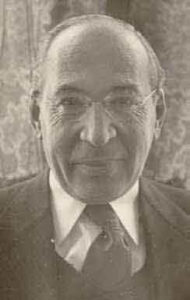 Munich, Germany, 1880–El Cerrito, Calif., 1952
Munich, Germany, 1880–El Cerrito, Calif., 1952
Musicology
A prominent musicologist and critic, Alfred Einstein was born into a family of scholars and received his doctorate in musicology from the University of Munich in 1903. He is best known for his revision of the Köchel chronological catalogue of Mozart’s works. He worked as Editor-in-Chief of the Zeitschrift für Musikwissenschaft (Journal of Musicology), and was a music critic for both the Münchner Post (Munich Post) and the Berliner Tageblatt (Berlin Daily). His publications include Die Wagner-Kritiken (1912–1933), Music in the Romantic Era (1946), and Schubert: A Musical Portrait (1951). On the day following Hitler’s seizure of power (January 30, 1933), Einstein fled to London settling near Florence, Italy, to work on his book, The Italian Madrigal (1949), and in 1939, he accepted a teaching position at Smith College. He was later invited to join the faculty of UC Berkeley, but while traveling across the United States with his family to move to take the position he fell ill. He died shortly after his arrival in the Bay Area, and his family donated his papers to the UC Berkeley Music Library.
Walter Friedlander
Berlin, Germany, 1891–Berkeley, Calif., 1984
Social Welfare
Walter Friedlander received his Bachelor of Law from the University of Berlin in 1913, and earned his Ph.D. in 1920. After being forced to give up his position on the Berlin City Council as supervisor of child welfare programs in 1933, he fled first to Switzerland and later to Paris, France, where he was executive director of the Social and Legal Services to German Refugees. In 1936, Friedlander secured a lectureship at the University of Chicago, which enabled him to immigrate to the United States, and in 1943, he joined the UC Berkeley Department of Social Welfare. Among his almost two hundred publications are Child Welfare in Germany Before and After Naziism (1940), an Introduction to Social Welfare (1955), Individualism & Social Welfare (c1962), and International Social Welfare (1975). The Walter Friedlander Fund, founded by friends and colleagues in 1984, seeks to promote education in international welfare and also hosts an annual lecture at Berkeley.
Gerson Goldhaber
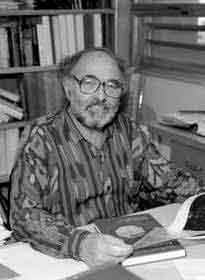 Chemnitz, Germany, 1924–Berkeley, Calif., 2010
Chemnitz, Germany, 1924–Berkeley, Calif., 2010
Physics
Gerson Goldhaber fled the Nazis with his family in 1933, settling in Cairo, Egypt. He received a M.Sc. in Physics from The Hebrew University of Jerusalem in 1947, followed by a Ph.D. from the University of Wisconsin in 1950. After three years at Columbia, he joined the UC Berkeley Physics department in 1953, rising to scientific prominence with research on particle physics and with the work he did at Lawrence Berkeley National Laboratory with E. Segrè and O. Chamberlain, and with his first wife, nuclear chemist/physicist Sulamith Löw, leading to the discovery of the antiproton. In 1963, Goldhaber and George Trilling’s group discovered the A meson, a subatomic particle Goldhaber named after his son, Amos Nathaniel. In 1989, he began to work in astrophysics, becoming one of the first members of Berkeley Lab’s Deep Supernova Search. In 1997, he presented the earliest dated evidence for what eventually became known as “dark energy.” He co-authored The Experimental Foundations of Particle Physics (1986) with Robert Cahn, and was a member of the U.S. National Academy of Sciences and the Royal Swedish Academy of Sciences.
Max Knight
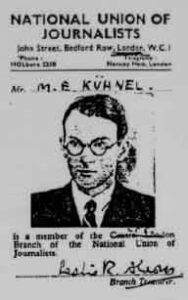 Pilsen/Plzeň, Austria-Hungary, 1909–Berkeley, Calif., 1993
Pilsen/Plzeň, Austria-Hungary, 1909–Berkeley, Calif., 1993
Editor
Max Knight, born Kühnel, lived in Vienna where, before fleeing to England the day before Nazi Germany invaded Austria in 1938, he was an editor and feature writer of the Neues Wiener Tagblatt. During his voyage from Europe to the United States, he wrote for The Jewish Chronicle in London and for the North China Daily News in Shanghai. From 1950 to 1976, Knight was the principal editor of the University of California Press, overseeing the publication of more than 200 books. He also translated plays by Bertolt Brecht, poems by Christian Morgenstern, and the correspondence between Richard Strauss and Stefan Zweig.
Wolfgang Lederer
Mannheim, Germany, 1912–Calif., 2003
Illustrator
Wolfgang Lederer, the son of a symphony conductor, studied at Leipzig’s Academy for Graphic Design and Book Arts and at Officina Fragensis in Prague. He fled from Nazi Germany to New York City in 1939, where he made a sparse living by designing record jackets. In 1941, Lederer moved to San Francisco and became a professor at the California School of Arts and Crafts in Oakland. A prominent book designer, he won numerous awards for his cover designs for UC Press books.
Hans Lewy
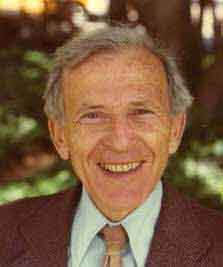 Breslau, Germany, 1904–Berkeley, Calif., 1988)
Breslau, Germany, 1904–Berkeley, Calif., 1988)
Mathematics
Born in Breslau, Germany (now Wrocław, Poland), Hans Lewy received his Ph.D. in Physics and Mathematics from the University of Göttingen in 1926. Forced out of his position as assistant professor by the Nazis in 1933, Lewy joined the Mathematics Department at Brown University later that year, and in 1935 arrived at UC Berkeley. During his time at Berkeley, Lewy was temporarily dismissed from the University of California when he refused to sign the Loyalty Oath (1949), but was reinstated three years later. A prominent figure in the field of partial differential equations and the theory of functions, Lewy was the recipient of the Steele Prize (1979) and the Wolf Prize (1984). He was a member of the National Academy of Sciences, the American Academy of Arts and Sciences, and the Accademia Nazionale dei Lincei (Rome).
Emilio Segrè
 Tivoli, Italy, 1905–Lafayette, Calif., 1989
Tivoli, Italy, 1905–Lafayette, Calif., 1989
Physics
After studying physics in Rome under Enrico Fermi, Emilio Segrè began his academic career in Italy in 1929. An assistant professor of physics at the University of Rome in 1932, where he worked with Fermi and other “Via Panisperna boys” on neutron research, he was also the director of the Physics Laboratory at the University of Palermo until 1938, when the Italian government’s anti-semitic laws pushed him and others out of academia. During a trip to Berkeley in 1938, he decided not to return to Italy and accepted a research assistantship at the Berkeley Radiation Lab. He became professor of physics and the history of science at UC Berkeley in 1946, serving until 1972. Segrè discovered the elements technetium and astatine, and, with Owen Chamberlain, the antiproton, for which he was awarded the Nobel Prize in Physics (1959). At Berkeley, he also served as a group leader with the Manhattan Project. The American Institute of Physics named its photographic archive of physics history in his honor, and the University of Palermo awarded him an honorary doctorate.
Otto Stern
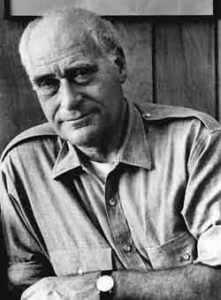 Zory, Prussia, 1888–Berkeley, Calif., 1969
Zory, Prussia, 1888–Berkeley, Calif., 1969
Physics
Otto Stern received his Ph.D. in Physics from the University of Breslau in 1912. Following various teaching positions across Germany and Switzerland, he accepted a professorship at the University of Hamburg in 1923. In 1933, Stern fled Germany and moved the United States where he became professor of physics at the Carnegie Institute of Technology in Pittsburgh. He received the 1943 Nobel Prize in Physics “for his contribution to the development of the molecular ray method and his discovery of the magnetic moment of the proton,” and he was one of the physicists who built the first atomic bomb. After his retirement from Carnegie, Stern came to UC Berkeley to teach physics.
Gunther Stent
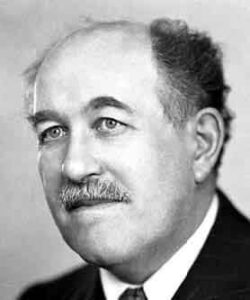 Berlin, Germany, 1924–Haverford, Penn., 2008
Berlin, Germany, 1924–Haverford, Penn., 2008
Molecular Biology
A pioneer in the discipline of molecular biology, Gunther Stent (born Günter Siegmund Stensch) fled to London in 1939, and in 1940, when he was 16, his father obtained a visa for him to migrate to the United States by himself. He received a B.S. in Chemistry and a Ph.D. in Physical Chemistry from the University of Illinois, Chicago. He joined the UC Berkeley faculty in 1952, contributing to the establishment of the Department of Virology in 1957, the Department of Molecular Biology in 1964, and the Department of Molecular & Cell Biology in 1987. Stent chaired the Department of Molecular Biology from 1980 to 1986, and the MCB Department from its founding in 1987 to 1992. Among his most prominent publications are The Coming of the Golden Age: A View of the End of Progress (1969), Molecular Genetics: An Introductory Narrative (1978), and Nazis, Women, and Molecular Biology: Memoirs of a Lucky Self-Hater (1998).
Alfred Tarski
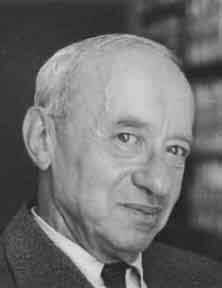 Warsaw, Poland, 1901–Berkeley, Calif., 1983
Warsaw, Poland, 1901–Berkeley, Calif., 1983
Mathematics
Alfred Tarski (born Alfred Teitelbaum), a prominent logician, mathematician, and philosopher, received his Ph.D. in Logic and Mathematics from the University of Warsaw in 1924. In 1923, he and his brother changed their last name to Tarski, and converted to Catholicism. One month prior to the German and Soviet invasions of Poland (September 1939), he came to the U.S. to deliver a lecture series at Harvard University and the University of Chicago, and did not return to Poland after. He came to California to teach at UC Berkeley in 1942 and stayed until his death in 1983. Tarski is especially known for his work on model theory and mathematical characterization of the concept of truth. At UC Berkeley, Tarski built a prominent school of research in logic and the foundations of mathematics and science, and contributed to the creation of a graduate program in logic and methodology of science. He was a member of the National Academy of Sciences, Foreign Member of the Royal Netherlands Academy of Sciences and Letters, and Corresponding Fellow of the British Academy.
Exhibition Credits
- Professor Thomas Laqueur, Department of History
- Professor Martin Jay, Department of History
- Dr. Alla Efimova, Director, The Magnes
- Dr. Francesco Spagnolo, Curator, The Magnes and Department of Music
- Daniel Viragh, Department of History and Magnes Graduate Fellow 2012-2013
- Elena Kempf (History 2014), Undergraduate Curatorial Apprentice
- Undergraduate Research Apprentice Program participants: Anna Cai, Honest Chung, Stuart Fine, Alexander Garcia, Aaron Horowitt, Elena Kempf, Serena Ma, Maiya Moncino, and Rachel Xiao
- Julie Franklin and Lorna Kirwan, Registrars
- Gordon Chun Design, Exhibition Design
- Benjamin Pierce, Videography
Planning for Saved by The Bay was made possible through a partnership between The Magnes Collection of Jewish Art and Life, the Department of History, the Townsend Center for the Humanities Working Group on Modern Jewish Culture, and the Undergraduate Research Apprenticeship Program at the University of California, Berkeley.
Special Thanks to:
Professors Peter Selz, John Prausnitz, Hannah Pitkin, Erich Gruen, Richard Buxbaum, and George Breslauer; David de Lorenzo, Peter Hanff, Kathryn Neal, The Bancroft Library; John Shepard, Jean Gray Hargrove Music Library.

